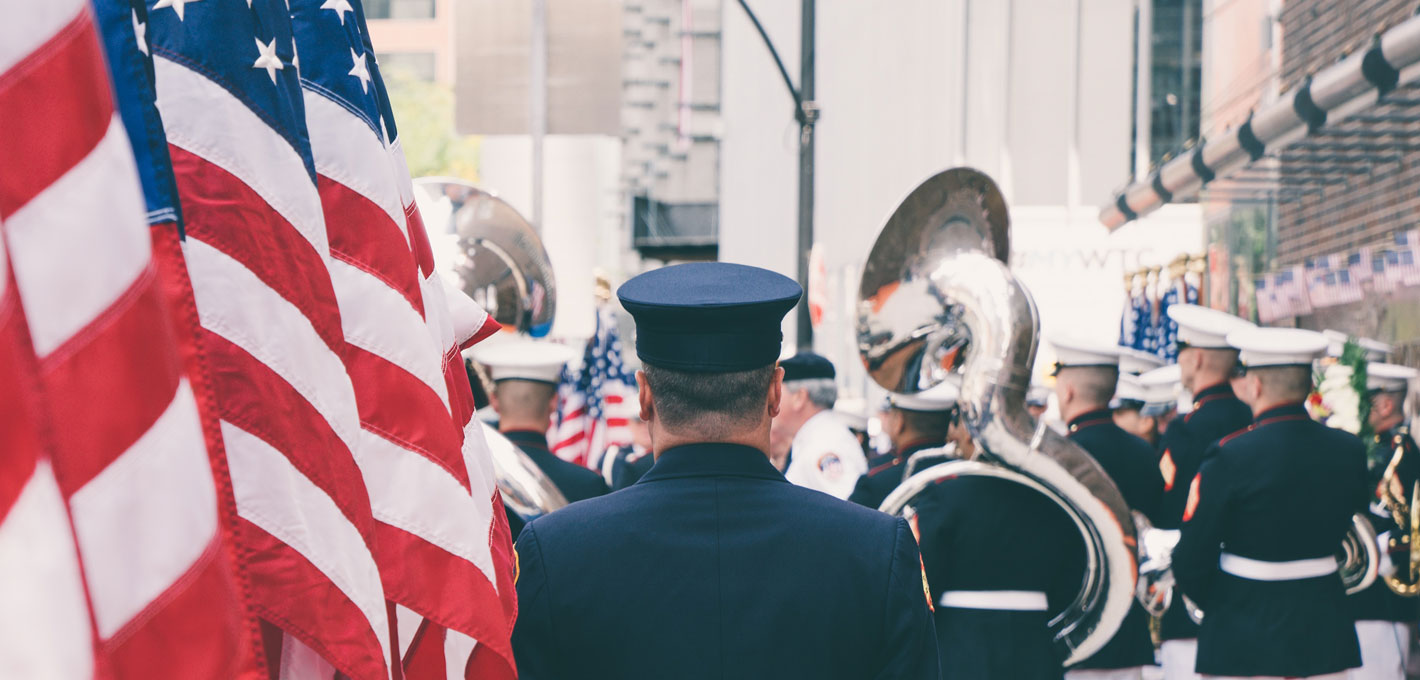Understanding Veterans Status
For over 30 years, the Law Offices of Psetas, Moore and Tetlow have represented thousands of clients. We have the experience in dealing with government claims. Throughout the years we have helped Veterans obtain the highest possible disability ratings.

Veteran Status
The first step in the process of determining your eligibility for veterans disability benefits is determining your veteran status.
For veteran status to be met, the veteran must have served on active duty, active duty for training, or inactive duty for training. This includes all branches of the armed forces, military academies, public health service, National Oceanic and Atmospheric Administration, and the Coast Guard. The veteran must also have at least 24 months of continuous service and have been discharged or released under conditions other than dishonorable. The 24 month rule of continuous service, the National Guard, and the Reserves all have exceptions that apply to the determination of veteran status.
Please call our office to schedule an appointment to further discuss these rules and how they may apply to your situation.
Talk to one of our attorneys for a
FREE VA BENEFITS CLAIM EVALUATION
You may be entitled to additional benefits. ACT NOW to protect your rights.
FAQs
A “veteran,” as defined by M21-1, the VA’s interpretation of the law’s governing veterans benefits, is a person who
- served in the active military, naval, or air service, and
- was discharged or released under conditions other than dishonorable.
“Active service” includes:
- active duty,
- any period of active duty for training during which a person is disabled or dies from a disease or injury incurred or aggravated in the line of duty, or
-
any period of active duty for training or inactive duty for training during which a person is disabled or dies from an injury incurred or aggravated in the line of duty or any of the following conditions:
- acute myocardial infarction (heart attack),
- cardiac arrest, or
- a cerebrovascular accident.
Notes:
- According to VAOPGCPREC8-2001, sexual assault constitutes an injury in relation to this definition.
- Time spent directly to and from active duty for training and inactive duty for training must be considered as part of the active or inactive duty for training as specified in 38 CFR 3.6(e).
References:
For the regulatory and statutory definitions of active duty, active duty for training, inactive duty for training, and active service, see sources including
- 38 CFR 3.6,
- 38 U.S.C. 101(21) through (24), and
- 38 U.S.C. 106(d)
Use the following table to determine the characterization of service for individuals who attended the
- United States Air Force Academy
- United States Military Academy
- United States Naval Academy
| If a(n)… | Enters service… | Then that service is characterized as… |
|---|---|---|
member of the
|
for the sole purpose of attending the academy |
active duty for training. Exception: If the service member continues on to active duty after the academy, consider the academy time as active duty. |
| civilian | for the sole purpose of attending the academy |
active duty for training. Exception: If the service member continues on to active duty after the academy, consider the academy time as active duty. |
| active duty service member | without receiving a release from active duty | active duty. |
References:
For more information on
- determining the duty status of a member of the Reserves, see M21-1, PartII, subpart ii, 6.2,
- determining the duty status of a member of the National Guard, see M21-1, PartII, subpart ii, 6.3, and
-
characterizing service for military preparatory schools, see
- VAOPGCREC 6-95, and
- VAOPGCREC 18-94.
- United States Air Force Academy
- United States Military Academy
- United States Naval Academy
- National Guard, or
- Reserves
- determining the duty status of a member of the Reserves, see M21-1, PartII, subpart ii, 6.2,
- determining the duty status of a member of the National Guard, see M21-1, PartII, subpart ii, 6.3, and
-
characterizing service for military preparatory schools, see
- VAOPGCREC 6-95, and
- VAOPGCREC 18-94.
Use the following table to determine the characterization of service for individuals who attended the
| If a(n)… | Enters service… | Then that service is characterized as… |
|---|---|---|
|
member of the
|
for the sole purpose of attending the academy |
active duty for training. Exception: If the service member continues on to active duty after the academy, consider the academy time as active duty. |
| civilian | for the sole purpose of attending the academy |
active duty for training. Exception: If the service member continues on to active duty after the academy, consider the academy time as active duty. |
| active duty service member | without receiving a release from active duty | active duty. |
References:
For more information on
An individual who does not meet the minimum active duty service requirements is not eligible for any veterans benefit under 38 U.S.C., or under any other law administered by the VA except
- veterans benefits for, or in connection with, a service-connected (SC) disability, or death
- insurance benefits provided by 38 U.S.C. Chapter 19, and/or
- refunds of a participant’s contributions to the educational benefits program provided by 38 U.S.C. Chapter 32.
The following table outlines exceptions to the minimum active duty requirements for veterans benefits.
| Exception | Description/Restrictions |
|---|---|
| Discharge Under 10 U.S.C. 1173 |
This discharge applies to an individual discharged for hardship. Acceptable narrative reasons on DD Form 214 A DD Form 214 issued for reasons of hardship must reflect a narrative reason for separation as follows
Note: Develop for cases in which
|
| Discharge under 10 U.S.C. 1171 |
This discharge allows for an early-out discharge within three months of the expiration of the term of enlistment or extended enlistment. Note: This discharge is not available to officers. Restrictions for persons in the Air Force, Navy and Marine Corps This discharge is not available to the person in the Air Force, Navy and Marine Corps who are discharged with less than 33 months of service, as the minimum period of enlistment for these branches of service is three years. Restrictions for persons in the Army This discharge is not available to persons in the Army who are discharged with less than 21 months of service, as the minimum period of enlistment is two years. Acceptable narrative reasons on the DD Form 214 Most discharges under 10 U.S.C. 1171 have one of the following narrative reasons for discharge on the DD Form 214
Accept a DD Form 214 with one of these narrative reasons and at least 21 months of service as proof of discharge under 10 U.S.C. 1171 without further development. Any other narrative reason for discharge for an enlisted person who served at least 21 months requires development to determine if the discharge was under 10 U.S.C. 1171. Restrictions for Public Health Service (PHS) and National Oceanic and Atmospheric Administration (NOAA) enlistments This discharge cannot be authorized by the PHS and NOAA as only oficers serve in those branches. |
| Disability Discharge |
This discharge is for those individuals who
|
| Compensable SC Disability | This discharge applies to individuals with a compensable SC disability. |
| Discharge from Reserve Status for Disability | This discharge is issued to an individual who incurred an SC disability from an inactive duty training injury and is subsequently discharged or released from Reserve status for that disability. The individual should be considered to have been discharged or released from active service. |
Why Hire A Veterans Disability Lawyer
Making a successful claim for veterans disability benefits through the Department of Veterans Affairs (VA) can be a very complex and time-consuming process. An attorney will navigate through the VA rules, regulations, and time limits for you and can reduce the number of headaches you have to go through. While a lawyer may not be able to make the VA decide your claim any faster, legal assistance may help you get more of the benefits you may be entitled to.
You need to hire a qualified veterans disability benefits attorney to fight for your rightful benefits. It is a significant advantage to you to be represented by a lawyer because VA laws and regulations are complex, often difficult to understand, and subject to frequent change.
Hire the Veterans Disability Lawyers at Psetas, Moore & Tetlow
The Veterans Disability lawyers at Psetas, Moore and Tetlow have successfully represented injured clients and their families with their government claims for over 30 years. We have the knowledge, experience and resources to assist you with the many rules, regulations, forms, substantiating documents, and deadlines that the VA uses to determine your eligibility for veterans disability benefits,

